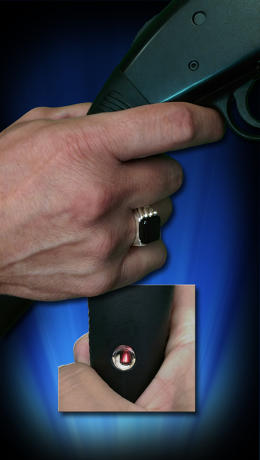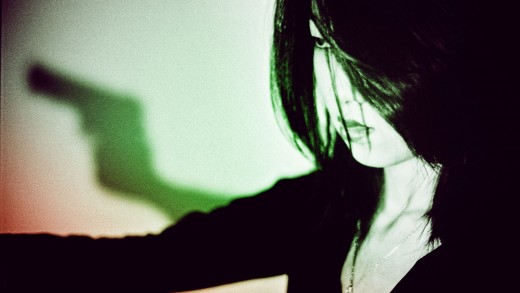whatever came about To That So-called “smart Gun”?
Two years after a gaggle of investors announced $1 million in delivers for new, safer gun know-how, nothing is in the marketplace—yet. here’s why.
January 5, 2016
Late in 2013, a bunch of investors and entrepreneurs sat onstage at fast firm’s Innovation Uncensored event and announced a brand new initiative: The smart Tech foundation would put $1 million towards spurring innovation to create safer gun technologies. The goal would be to sidestep the political gridlock surrounding gun security and seem to be as a substitute to “free market alternatives.” If government couldn’t resolve the problem, possibly innovation might.

“We looked at this and stated there may be been a systemic failure in the level of innovation and capitalization in this area,” serial entrepreneur Jim Pitkow informed fast firm on the time. He, alongside angel investor Ron Conway, are two of the muse’s chief backers. “smartly, we know the right way to foster innovation.”
more than 200 folks utilized for a section of the grant. the inspiration selected 15 applicants with what appeared like essentially the most promising ideas, from fingerprint-get admission to guns to firearms that simplest unencumber when activated by a token or ring, and gave each and every of them a section of the a million buck pie to develop their innovations.
but now, two years later, no longer a single good gun has entered the market and the smart Tech Firearms problem is working low on funds. So what’s subsequent for its recipients and their smart gun innovations?
“What subsequent? That’s the million buck question,” says Jonathan Mossberg, who received a $100,000 provide for his ring-activated iGun know-how. on the outset, he and the 14 different grantees had to set non-public project goals, then provide the muse with monthly development experiences. How they were allowed to spend the cash relied on how advanced their idea was; these innovators with an idea but no product could put the money toward research and development best. more advanced tasks might shell out for issues like advertising or market testing.
Mossberg used his provide to hunt for market validation, which he mentioned he discovered after taking his iGun technology to police departments and faculties. “These guys said, ‘that is neat. I see where it would be acceptable.’ That in reality instructed me that A) this is a very powerful thing and B) there’s an important market available in the market.”
Nineteen-year-previous Timmy Oh used his $10,000 provide to develop an idea for a biometric gun safe. “Over two years, the smart Tech groundwork has helped us take this concept from concept to actual working prototype,” says Oh.
When requested how he felt in regards to the smart Tech Firearm challenge two years after launch, Pitkow tells me he’s “beyond extremely joyful” with the consequences. “We saw a ton of innovation and our innovators have made great development,” he says.
but now those self same innovators are working into an issue: they have potentially groundbreaking and life-saving technologies that few seem to wish to put further money into. That’s because the political minefield surrounding the gun debate, and the lobbying power of the NRA, make the gun industry a unsafe venture.
“Gun control supporters recommend rules to prohibit the sale of firearms that don’t possess ‘good’ expertise, in an effort to restrict the manufacture of traditional handguns, carry the price of handguns that would be allowed to be bought and, presumably, to imbed into handguns a tool that might permit guns to be disabled remotely,” the NRA’s professional place on sensible weapons reads. “The NRA doesn’t oppose the advance of ‘sensible’ weapons, nor the ability of american citizens to voluntarily collect them. alternatively, NRA opposes any law prohibiting americans from acquiring or possessing firearms that don’t possess ‘good’ gun technology.”
On Monday evening, White home officials mentioned that President Obama plans to announce govt movements to expand history tests and extra strongly put into effect gun regulations, as well as step up smart gun research and get entry to to psychological well being care. He tweeted:
although some other steps are being made to clear the way for the sale of sensible weapons—New Jersey recently handed a invoice requiring gun outlets to carry at the least one good gun three years after they’re vetted by using authorities and available on the market—they’re nascent.
“we all notion there could be more financial leads popping out of this,” says Mossberg. “There weren’t, sadly. That didn’t materialize.” Having received the market validation he needed, he used to be hoping to start out production quickly. however to his disappointment, he hasn’t received a single supply from further backers.
the muse’s president, Margot Hirsch, says bringing these products to market used to be by no means the end purpose. “Did we see getting products on cabinets? No, because we didn’t present them with the entire capital they wanted to do this,” she says. as an alternative, the hope was once that the sensible Tech foundation’s seed money would draw nationwide attention to smart-gun technology, and in doing so, usher its funding and adaptation.
however what’s preserving these technologies back isn’t a lack of knowledge. It’s an absence of acceptance. quite a few gun house owners are skittish about the rest that even slightly sounds adore it might limit get entry to to firearms. A gun lock is still a gun lock, even if it recognizes its person’s fingerprint without delay. the fact that the various people behind good-gun expertise are in truth gun fanatics and NRA contributors themselves doesn’t topic in a political local weather that paints being pro-gun and being professional-gun safety as collectively exclusive.
“We definitely knew that the character of the problem used to be one that’s very polarized and intensely debated,” says Pitkow. “This sector has its own challenges. Do you need to fund a gun that’s arguably smarter and will shop lives however may even be used to kill folks? They’re still guns.”
And but, both Pitkow and Conway say they’re proud of the outcome of the problem. “There are capital challenges, distribution challenges, and market demand challenges, all of that are solvable,” says Pitkow. “this is what entrepreneurship is ready, is doing the unattainable.”
Conway says the hope used to be that they’d fund a couple of projects, a few of which might turn into firms. “Failure can be that now not one thought was once commercialized,” he says. “on this case we’re going to commercialize a number of of the ideas.”

that remains to be considered, in fact, even though one provide recipient, Omer Kiyani, received further funding from outdoor buyers for his Identilock biometric fingerprint-studying gun lock. He wants to start out manufacturing it in Detroit in early 2016. “There are sufficient excellent, sensible, sensible folks fascinated by this product that we’re quite assured we’d be able to put it on store shelves,” he says. A handful of innovators are turning to crowdfunding campaigns to boost extra cash for their products.
The good Tech foundation will proceed to help the supply recipients by using connecting them with the media and doable traders, however at this level all it has left to provide is non-financial enhance. “We’ve obtained limited resources, sadly,” says Hirsch. “We’re making an attempt our very best.”
there may be at present no plan for some other challenge. “We’d want as a minimum one million dollars and we don’t have that,” Hirsch says. “optimistically one day these products will get to market. My fingers are crossed for them. This united states in point of fact wants it.”
quick company , read Full Story
(24)














